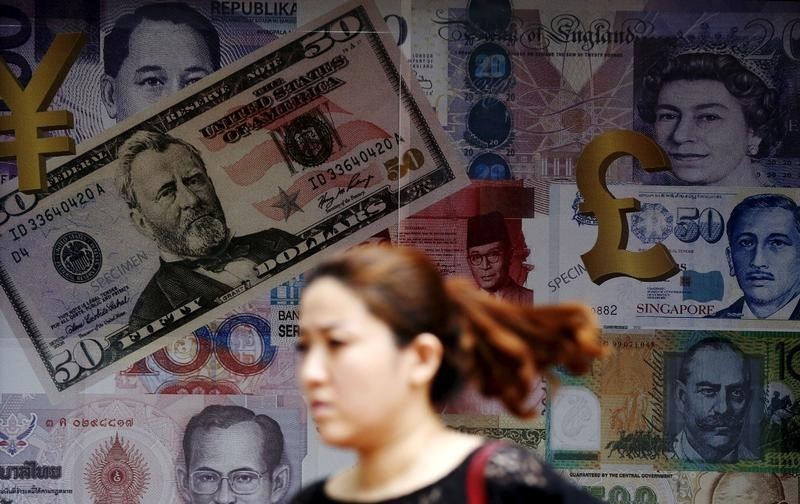By Yasin Ebrahim
Invesing.com – The dollar struggled to find its footing Thursday, amid mixed U.S. economic data and a sharp decline against the pound after the Bank of England held rates steady in the wake of firmer economic data.
The U.S. dollar index, which measures the greenback against a trade-weighted basket of six major currencies, fell by 0.18% to 97.64 .
Gross domestic product increased at a 2.1% pace in the fourth quarter of last year, the Commerce Department said in its advance estimate on Thursday, in line with forecasts. But the growth was supported by a collapse in imports and final private domestic sales rose at an annualized rate of only 1.4% in the quarter, the slowest rate in four years.
The U.S. economy has been underpinned by strong consumer spending offsetting weakness in other areas like business investment and manufacturing.
"Business investment edged lower for a third straight quarter - the longest such streak since 2009 - with the industrial sector continuing to feel the pinch from the US-China trade war," RBC said. "But consumer spending increased at a still relatively solid 1.8% pace (although that is down from a 3.1% increase in the third quarter) and residential investment growth picked up to its strongest pace in 2 years."
On the labor front, initial jobless claims fell by 7,000 to a seasonally adjusted 216,000, slightly missing economists' forecast for a drop to 215,000.
The greenback was also pressure by a surge in the pound as the Bank of England left its benchmark rate at 0.75%. But some analysts have suggested that a future rate cut is not completely off the table should the recent run of positive U.K. economic data fade.
"If the recent uptick in the data does not persist, those pressures will probably increase and markets may transfer cut expectations to the next BOE meeting," said George Lagarias, chief economist at Mazars.
GBP/USD climbed 0.53% to $1.3091.
EUR/USD added 0.20% to $1.03 on mixed economic data from Germany as inflation undershot, but unemployment beat forecasts.
Safe-haven demand, meanwhile, continued to underpin the yen and Swiss franc as the death toll from the coronavirus outbreak rose to 170, raising fears about the potential impact of the disease on global growth.
Fears of a pandemic intensified somewhat after Centers for Disease Control reported the first person-to-person transmission of the coronavirus in the U.S., which now has six confirmed cases.
USD/JPY fell 0.33% to Y108.64 and USD/CHF fell 0.45% to 0.9688.
USD/CAD rose 0.19% to C$1.3221.
